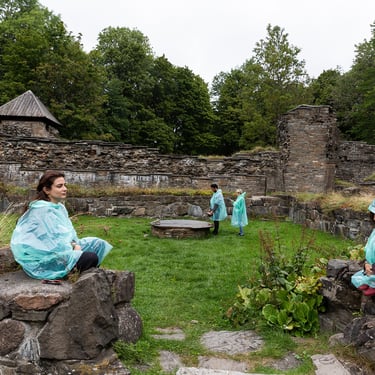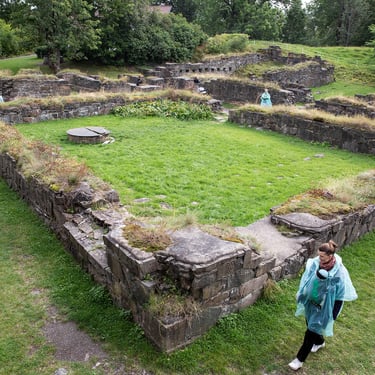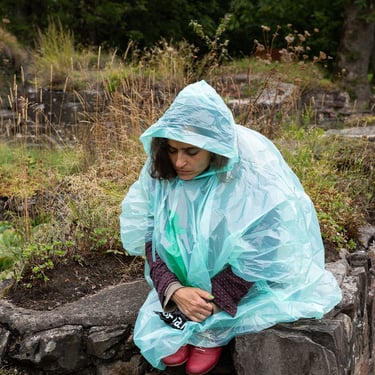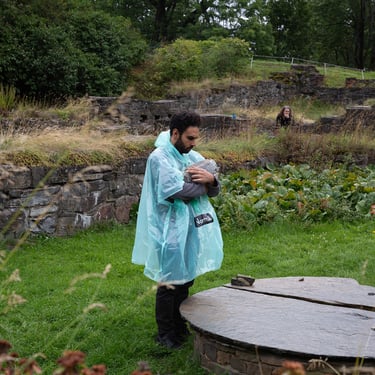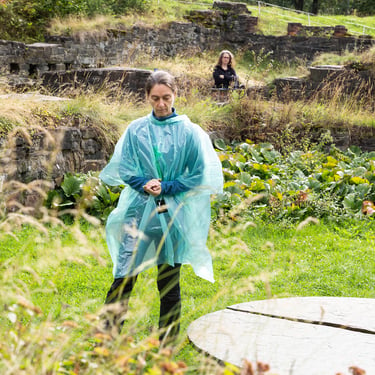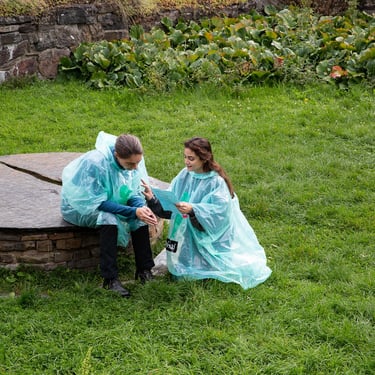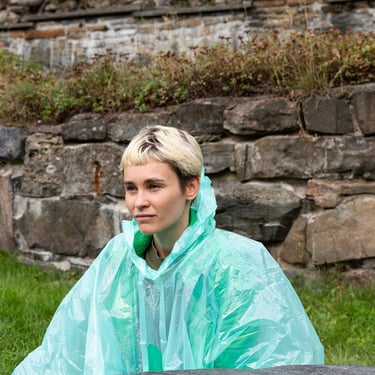ROOM OF SADNESS
I suggested that the participants of “Room of Sadness” create a space for each other and be able to see the pain. The location I chose was the ruins of a medieval monastery on Hovedøya island not far from Oslo. After the Second World War, local women who were involved in a relationship with German soldiers were sent here. So the place itself radiates sorrow.
When arriving on the island, each of the participants found their Stone — a memory that still hurts. Each stone, like a memory, is unique. Someone brought a huge boulder, someone brought a small pebble, and one of the participants, Joan, found two rocks that fit into one and placed a flower in the middle. When all the stones were found, we began the ritual.
So everyone took turns entering the room to explore their memory of sadness. At this time, other participants became parts of the room — restoring “windows and doors” that keep in touch with the outside world and welcome the person in the middle. There was also a secret role of the “Keeper”, who was supposed to help let go of the stone, both emotionally and physically. Keeper had special instructions on how to do that with the voice and touch. And finally, there was a Witness who watched the process, only they could see the whole picture.
The roles, like the room itself, were symbolic. The Room of Sadness is your inner world, your wound. A stone in your hands is your pain, your sadness. You go into your wound, you see your pain. And you support yourself, you heal yourself. You are the windows and doors through which emotions come. You are the Keeper. And you save yourself.
You are the Witness to your pain. And you can see it.
When you can see the pain, you are ready to heal it.
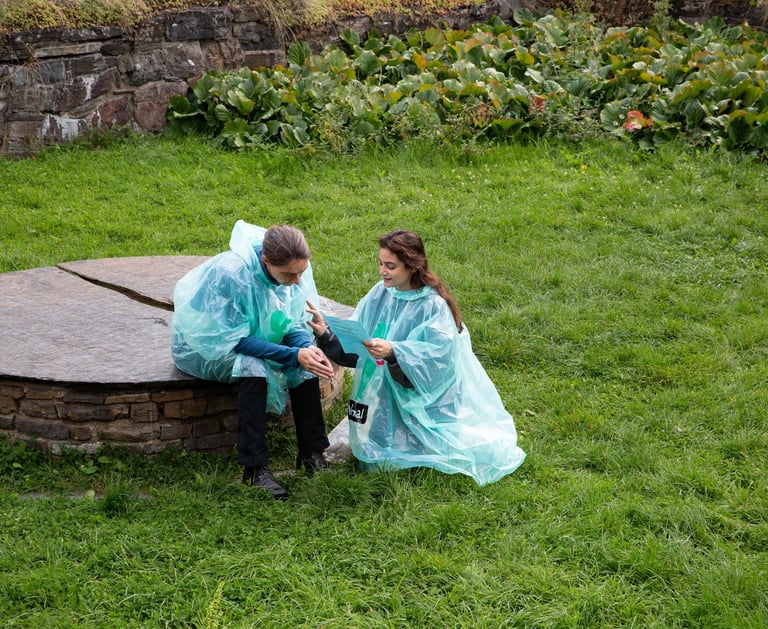

“Room of Sadness” at PRAKSIS residency, Oslo, Norway, 2022. © Daria Pugachova. Photo: Nastassja Nefjodof
